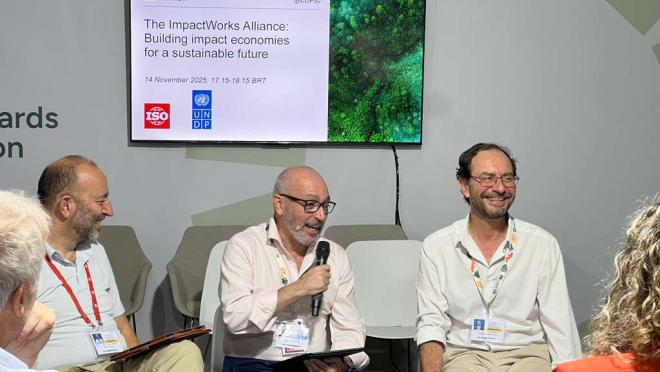Namibia, like most countries, has been grappling with the consequences of COVID-19 since early 2020. To respond to the health challenges of the pandemic, the country has imposed lockdowns and closed borders. While this helped to limit the spread of the virus, it also had significant socio-economic impact on the lives of Namibians and the economy’s performance, which has been in recession since 2016 and is expected to slow down to a low growth rate of 1.4% in 2021, as per this year’s Bank of Namibia’s GDP growth projection.
Combined with increasing debt levels – expected at 55.6% of GDP in 2020 – this situation calls for a diversification of Namibia’s economy that allows for much needed structural transformation needed to bring about sustainable and equitable growth in the country. Against this background, UNDP Namibia has supported the Government of Namibia through its Ministry of Industrialisation and Trade (MIT) to establish priority sectors and sub-sectors in various parts of the country where development progress is slow and can benefit from targeted policy intervention. Through in-depth analyses and numerous stakeholder consultations, UNDP and MIT established business models to respond to the identified needs in order to inform the direction of the required structural transformation and guide private sector investment activity in Namibia.
Through this process, the Namibia SDG Investor Map – following a globally tried and tested UNDP methodology – developed 15 Investment Opportunity Areas (IOAs), which offer comprehensive market insight spanning both impact and business considerations. Informed by the Namibian government’s objectives to achieve inclusivity, sustainability and equity economically, build capable and healthy human resources, and ensure a sustainable environment, as outlined in the Fifth National Development Plan (NDP5) and the Harambee Prosperity Plan II as well aid the undergoing formulation and draft of the Sixth National Development Plan (NDP6), the investment opportunities are situated in the infrastructure, food and beverage, education, health care, transportation and services sectors.
Among the IOAs of the Namibia SDG Investor Map are for example, agricultural cold storage opportunities or innovative commercial agri-developments, which will allow the country to become the preferred source and transhipment gateway providing high quality and affordable produce for Southern African Development Community (SADC) markets. Other IOAs can potentially position Namibia as an innovation and technology hub, for example through the local manufacturing of essential medicines and drugs, which has also been highlighted as a target area for the newly established Namibia Investment Promotion and Development Board (NIPDB).
The findings of the Namibia SDG Investor Map are publicly accessible to investors and any other interested stakeholders on the SDG Investor Platform, which features investment opportunities from across the globe, including Ghana, Kenya, India, Nigeria, Rwanda, South Africa and Uganda in Sub-Saharan Africa. The narrative report of the Namibia SDG Investor Map is available here. UNDP Namibia, together with its partners, will utilise the investment opportunities for the private sector to comprehensively support the government of Namibia as part of its Integrated National Finance Framework (INFF), including the SDG financing strategy and the digital finance ecosystem assessment currently under development.
UNDP Namibia, in collaboration with MIT, launches the Namibia SDG Investor Map as part of the Champions for Development Fundraiser Gala Dinner and in the context of the Sustainable Development Goals Impact Facility (SDGIF) on 11 November 2021. It will be followed by the SDGIF MSME Expo 2021 on 12-13 November 2021 organised in collaboration with MIT, the Environmental Investment Fund of Namibia and Standard Bank.


















